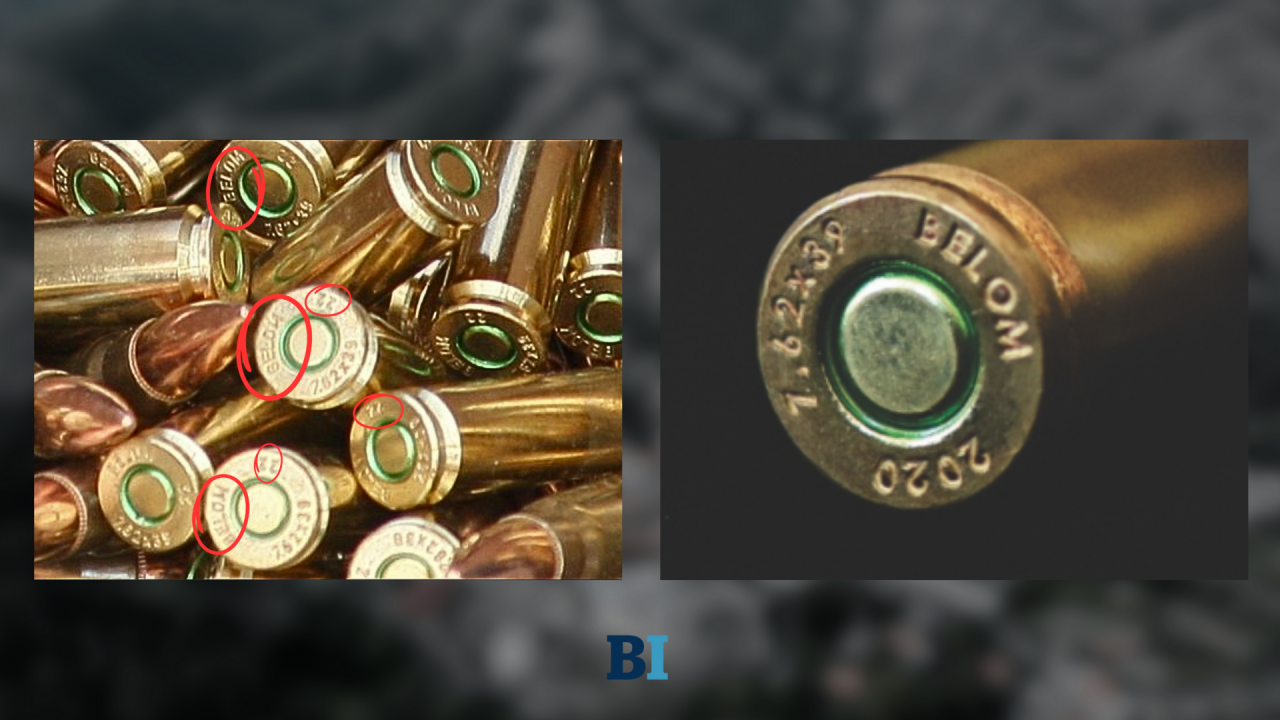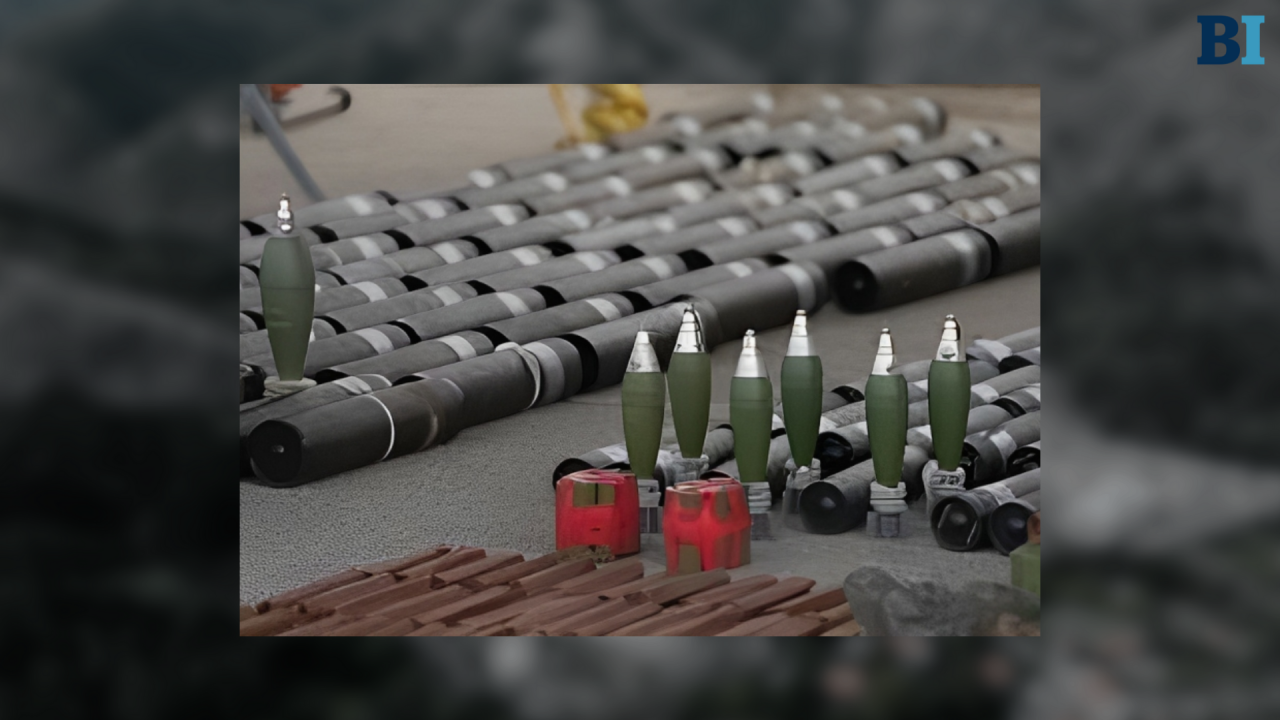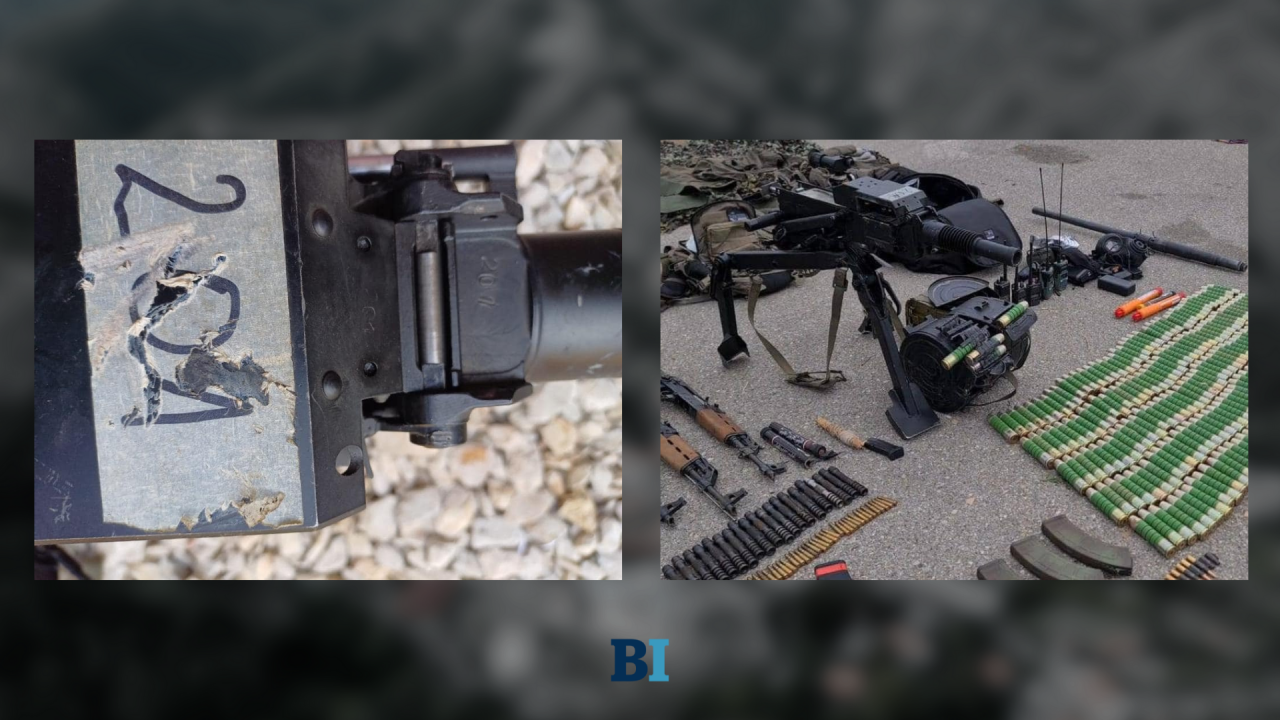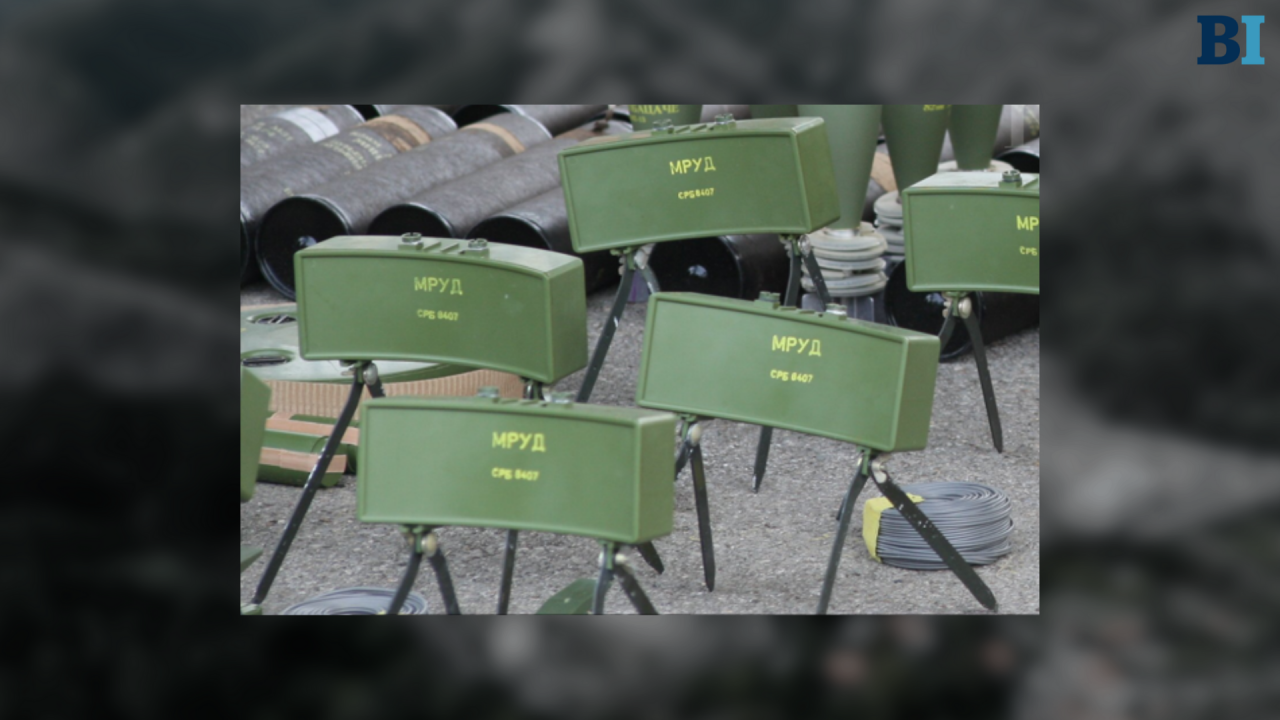Bullets seized from Serb gunmen in northern Kosovo last month were made in Serbia just last year, while mortar rounds and grenade launchers passed through Serbian state maintenance centres in 2018 and 2021, BIRN has found from analysis of markings on the extensive arsenal.
They included MRUD anti-personnel mines, 60mm M73 mortar rounds, M80 ‘Zolja’ anti-tank rocket launchers, and an M93 automatic grenade launcher, all of which were put on display by the Kosovo police.
The mortar rounds and anti-tank rocket launchers had passed through state maintenance centres in central Serbia in 2018 and 2021 respectively, BIRN can confirm.
Serbia’s president and government have denied having anything to do with the actions of Radoicic’s gunmen, who killed a Kosovo Albanian police officer in the early hours of September 24 in a predominantly Serb-populated part of northern Kosovo, before barricading themselves in the grounds of an Orthodox monastery. Three gunmen were killed in the police operation that followed. Kosovo’s government says Radoicic’s involvement is a clear indicator of Serbian state support, something Radoicic himself has dismissed.
Most interesting is the ammunition, which includes assault rifle bullets – 7.62x39mm – that match those made in 2022 by the Belom factory, Serbia newest state arms producer.
“This is really new ammo and Serbian authorities can trace who it was sold to,” said Novica Antic, a senior official of the Serbian Army Union. “The Serbian state should be the one most interested in investigating this.”
Serbian Defence Minister Milos Vucevic has said the fact the weapons were manufactured in Serbia proves nothing, holding up photos showing even police in Kosovo using Serbian-made weapons.
The defence ministry did not respond to a request for comment for this story.
Assault rifle bullets

Bullets found by Kosovo police (L) and the same type of bullet on the Belom website (R). The position of production year and caliber are identical, proving that the production year of the bullet seized in north Kosovo is 2022. Photo edited by BIRN
Among the ammunition were 7.62x39mm bullets, a common assault rifle round, clearly labelled with the production year 2022.
The markings and their position on the bullets seized by the Kosovo police clearly correspond with those on the same caliber bullets advertised on the official website of Belom, the newest addition to Serbia’s arms industry having been registered in the Serbian business registry in 2016.
Its ultimate owner is state arms giant Yugoimport SDPR, while the factory uses equipment and machinery bought from Belgian machinery manufacturer NLC in a deal previously reported on by BIRN and which, according to KPMG auditors, was to the detriment of Serbian taxpayers.
The machinery bought from NLC is exactly the kind used to produce 7.62×39 mm rounds, the kind used by Radoicic’s group.
BIRN submitted a Freedom of Information request to the Ministry of Internal and External Export asking about the export of Belom ammunition of this type produced in 2022, in order to identify possible buyers. There had been no reply by the time of publication.
M73 mortar shells

60 mm M73 mortal shells produced in Krusik Valjevo and seized by police in Kosovo. Photo: Kosovo Police
Based on an analysis of the markings on the weapons, BIRN can report that the M73 rounds were produced in the state arms factory Krusik, in Valjevo and bear the marking ‘RZK 1801, R’ – meaning they went through maintenance at the Repair Centre Kragujevac in 2018.
Sources say that the Cyrillic lettering on the M73 shells mean they were initially made for the Serbian army, but they may still have been sold later to a private arms dealer.
Anti-tank rocket launchers

M-80 Zoljas seized in Kosovo. Photo: BIRN
The Zolja anti-tank rocket launchers are stamped ‘RZK 2101, 11R’, meaning they were also repaired in Kragujevac but in 2021.
Kosovo-based military experts, who spoke on condition of anonymity, said packaged Zoljas are not commonly found on the black market due to strict controls on their handling.
Serbia has a fairly good system of inventory, said Serbia-based military expert Aleksandar Radic, and if anything goes missing from military stockpiles it can traced quickly.
“For every weapon there is a precise record,” he said. “Our country is proud of that. Whenever there was some terrorist incident in Europe where, for example, a Zastava weapon was used, our system could quickly detect if that weapon was in the system or not and what happened to it. Now the same can be done.”
M93 grenade launcher

Weapons seized, including an M93 automatic grenade launcher (R) and the factory number 201 on the M93 automatic grenade launcher (L). Photo edited by BIRN: Official Facebook Account of Kosovo Minister of Internal Affairs Xhelal Svecla
The M93 grenade launcher was produced in Kragujevac’s Zastava factory. A package list found at the scene, and which would normally be in the box with the weapon, suggests it at some point passed through another state maintenance centre – Technical-Repair Centre Cacak – also in central Serbia. Both the package list and the weapon seized bear the same factory number – 201.
Neither maintenance centre – in Kragujevac or Cacak – responded to requests for comment.
According to the Zastava website, the M93 is an infantry weapon designed for the “annihilation of covered and uncovered live forces at distances up to 1700m, as well as for destruction of light armoured combat means at distances up to 1000m”. Zastava did not respond to a request for comment.
A Serbian military source, speaking on condition of anonymity, said the package list displayed by the Kosovo police appeared authentic and that he recognised three of the signatories.
Radic said the fact that the weapon was put through maintenance meant it was unlikely it was intended for sale, particularly since Serbia does not have a surplus of M93s.
“ABGs [automatic grenade launchers] were never sold after overhauls because we didn’t have an excess of them,” he said. “And why would a new one go for repair?”
Antic said the weapons were most likely stolen from military stocks or sold to private arms traders in Serbia who then re-sold them to Radoicic’s group.
“I personally do not believe that the army gave these weapons directly to Radoicic’s group, but that he obtained them in some roundabout way,” Antic told BIRN. “So either they were stolen or the weapons came to them through private arms dealers.”
That does not exclude the possibility that state officials were involved, he said, but only that the weapons did not come from official “military units”.
Radic, however, said it was to imagine that someone could get their hands on such an amount of heavy weaponry without the cooperation of Serbian state and military officials.
“Serbia has strict control over exports and it is not realistic they got end-user certificates for, let’s say, some African countries and then took some rifles from it to give to Radoicic’s group.”
Anti-personnel mines

Yugoslav-made MRUD anti-personnel mines seized by Kosovo police. Photo: BIRN
Kosovo police also seized a number of Yugoslav-made MRUD anti-personnel mines designed to wound or kill by fragmentation.
Based on the markings, the mines seized were manufactured in 1984.
Some former Yugoslav republics, including Serbia, have acknowledged possessing an unspecified number of MRUD directional fragmentation mines, but said they were only used in command-detonated mode and therefore not subject to the United Nations Mine Ban Treaty Convention.
Antic, from the Army Union, said Serbia has such mines in stock and overhaul facilities but that they have also surfaced on the black market since the Yugoslav wars of the 1990s.
“Serbia has MRUD mines; they are not classic mines and are not banned,” he told BIRN. “But they can be found easily on the black market.”
MRUD mines, for example, found their way into the hands of the Janjicari [Janissaries] football ultras, a powerful organised crime gang currently on trial on multiple murder and drug dealing charges.
According to testimony during the trial, the gang bought five MRUD mines from the Montenegrin Skaljari drug-trafficking clan.
On October 1, Kosovo police director Gazmend Hoxha said that the police officer killed on September 24 in northern Kosovo died from wounds inflicted by “anti-personnel mines detonated with tele-conductors and electric batteries that were used by the group”. He did not specify, however, whether it was a MRUD.





